The Evolution of Comic Making: How Creating Comics is Changing Alongside the Medium and its Industry
Once, comics were Marvel and DC. The “Big Two,” as we often call them now, weren’t just the biggest players in the game; they were the game. The industry revolved around them, and that was the way it was.
That has shifted dramatically.
After the rise of Image and the creator-owned model, the manga boom, the rapid growth of young readers comics thanks to Scholastic Graphix, First Second, and others, and the expansion of online platforms that make the publishing and funding of comics easier than ever, the world of comics has changed considerably. The idea of what works and what doesn’t has evolved, as well, as the book market 1 has grown to nearly the same size as the direct market 2 in the U.S. and Canada, per Comichron and ICv2’s 2018 year end market report. Even the preferred format for the medium has seen a seismic shift, as the comic – or floppy, single issue, or whatever you want to call it – has fallen far behind the graphic novel 3 in the marketplace, with comic sales making up just under 33% of revenue for the industry while graphic novels represent a smidge under 58%. Graphic novels aren’t rising; they’ve risen.
We’re seeing the evolution of comics in front of our very eyes, as the two giants of the industry now don’t just have company: they have rivals for the throne.
We spend a lot of time talking about what this all means in a macro sense. How are things changing for comics? It’s a fair question, but it made me think of another: how are the people making them feeling this shift? We’ve long thought we knew how comics work, but with such a sea change happening in the industry, how are things different for the creators coming into comics during this transition? Have the perceptions of concepts like breaking in, success and even what a comic can be changed for them?
Let’s talk to some of this generation of creators and find out.
For as long as comics have existed, regardless of who is on top or what’s happening within the industry, there is a question that creators have been asked. It’s a constant in an industry without many outside of the superheroes that often lead the way. It’s the classic “How do I break in to comics?”
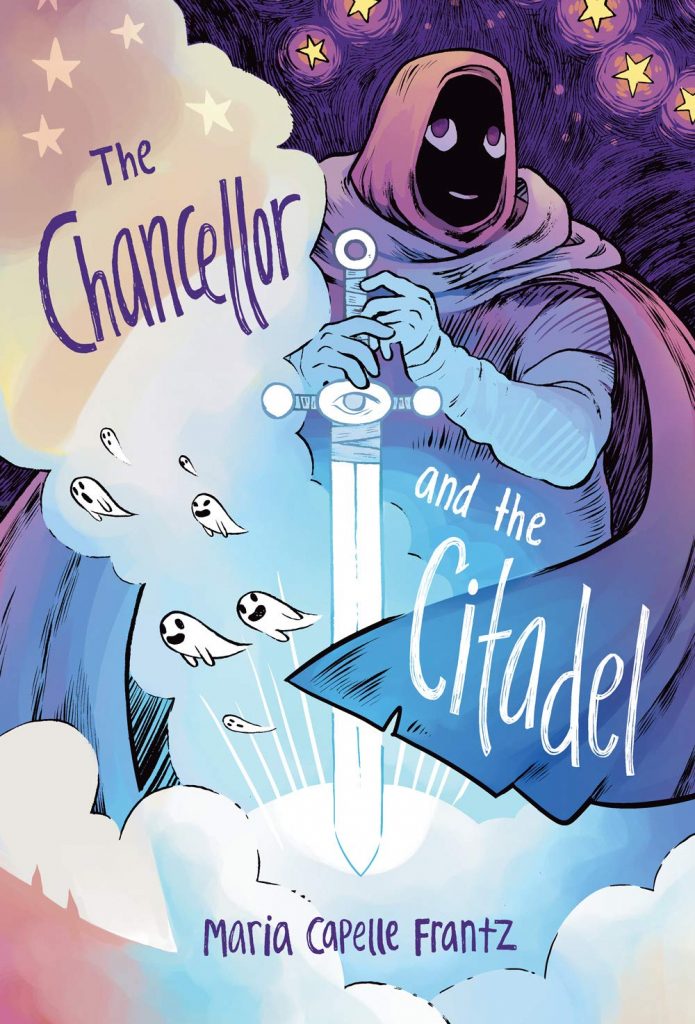
And it makes sense why that would be asked so often. From the outside, comics can seem impenetrable. The distance from here—an aspiring creator—to there—a working creator—can seem like an insurmountable divide. But for Maria Capelle Frantz, the cartoonist behind The Chancellor and The Citadel from Iron Circus Comics, that question is built on an outdated premise, and one that’s derived from the period before more options were available to creators.
“I feel like ‘breaking in’ is definitely a term that carried over from the days when Marvel and DC dominated the comics industry, when there were more consistent ideas of what success looked like,” Frantz shared. “These days there’s so many different ways to be successful that the term can be misleading for creators who are starting out.”
Part of that comes from even the idea of breaking in itself being a moving target. Once upon a time, that likely meant you’ve made it to Marvel or DC. But depending on who you ask today, it could mean you’ve found a group of peers to call your own, it could be monetary based, maybe it’s a large and passionate social following, a publishing deal, or, even now, finding work at Marvel or DC. It’s a flexible idea, as Frantz and others noted, and one built from individual aspirations. Your route stems from those objectives, and as cartoonist Gale Galligan (The Baby-sitters Club) noted to me, these days, it’s an “infinitely mutable process.” Take her breaking in story, for example.
1. Draw a lot as a kid. Lots of goofy Garfield-adjacent gag strips, magical team stories, fanart, diary drawings, sketchbooks full of eyeballs for no reason.
2. Study animation in undergrad, figuring that you might be able to find a job that way. Keep drawing comics, which are your true passion, on the side.
3. Graduate, get temp work in NYC, buy a copy of Smile. Look up Raina Telgemeier, and discover that she lives in your neighborhood and is looking for an intern.
4. Finally make the connection that the people who draw the comics you love are real people who might actually be doing it for a living, which is something you could aspire to.
5. Spend a few years drawing even more comics before deciding to go to graduate school for comics. I would like to reiterate that this is not a path for everyone, and I have a lot of feelings about it. Regardless, I am legally a Master of Comics now and you may address me as such.
6. Pitch to an editor from Scholastic while at grad school. Find out that they’re looking for someone to draw more Baby-Sitters Club comics, and would you like to draw some test pages?
7. Go outside and yell a little.
8. Get the book deal. Yell a little more. Draw lots and lots and lots of pages.
9. I am here.
That’s not a path anyone could ever hope recreate. But that’s what breaking in could look like these days: a circuitous path that takes you from where you’re at to where you want to be with very little ability to predict how you get there. The evolving nature of comics as a medium and the industry that revolves around it feeds into this, as artist Nicole Goux (Fuck Off Squad) mentioned.
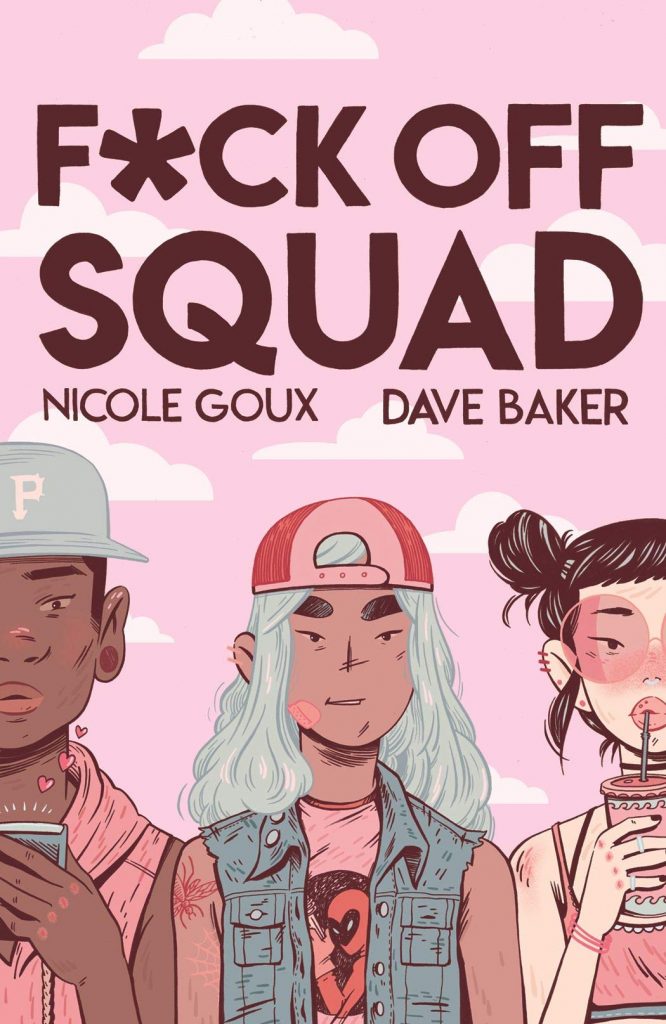
“Comics feels like it’s in the process of a major shift and there seems to be three major rungs right now, the direct market, book publishing, and web comics,” Goux said. “Depending on which one you’re interested in, the path will be different, and in fact I feel like there’s multiple paths into each.”
The concept of breaking in to comics has morphed alongside the medium, as we’ve seen a change in comic formats, distribution channels, and even, perhaps most crucially, the ways you can make money off your work. But at its core, what Marvel and DC once represented—and other avenues have stepped in to fill alongside the major direct market publishers—wasn’t so much an endgame for creative reasons, but for financial ones. As writer James F. Wright (Nutmeg) told me, the Big Two provided “a stable income and a sizable reach” during a time when there were fewer options that potentially provided either of those things.
“In that sense, ‘breaking in’ meant you could conceivably sustain a living in comics because the potential income was higher than smaller outfits,” Wright said. “But now with Patreon and Kickstarter and other outlets, there’s less of a need to rely on the Big Two as the end goal. Raina Telgemeier and Ngozi Ukazu and Spike Trotman and a host of other folks are doing just fine without them.”
That’s where an important intersection occurs, and that’s between the concepts of breaking in and success. They’re difficult to separate, as you could have made it in comics simply when you make a living off them, as Wright mentioned. But that’s not the only definition of success, writer Vita Ayala (The Wilds, Livewire) shared. While they note that the financial element is key – “being paid to write is a blessing,” Ayala shared – they are looking to build a path to a goal of theirs.
“Now success means using whatever little clout I have to get more People of Color and Queer folks into the game,” Ayala said. “My agenda is my brand – Brown & Queer – and that’s what I am working towards.
“When people can pick up a book centered around Black/Brown folks and/or Queer folks and it is just a book—not a Black Book or a Gay Book—then success will be achieved.”
For Ayala and others I spoke to, representation is key to their idea of success. Ayala doesn’t want to see their kids or their siblings’ kids “know what it feels like to grow up not seeing fully fleshed out, non-stereotypical characters like themselves in books and movies.”
That further underlines that, like with breaking in, the vision of success or the goals of the creators I spoke to are far more than any one thing. For some, they’re as simple as what artist Liana Kangas (She Said Destroy) told me, in that she wanted to “work on stories that resonate with people in a way that might inspire them to tell stories as well.” The basic act of “making comics” to share with others is a core objective, and one that several I spoke to echoed. For others, like Frantz, what success looks like is as malleable of an idea as the medium she works in.
“I think my idea of success has always been evolving, to be honest,” Frantz said. “When I first started making comics back when I was a teenager, I think my idea of success was just getting paid to make comics. Then after that happened, it was getting paid to make my own comics. Then it was getting paid to make my own book.
“I think it’ll keep changing as I move forward.”
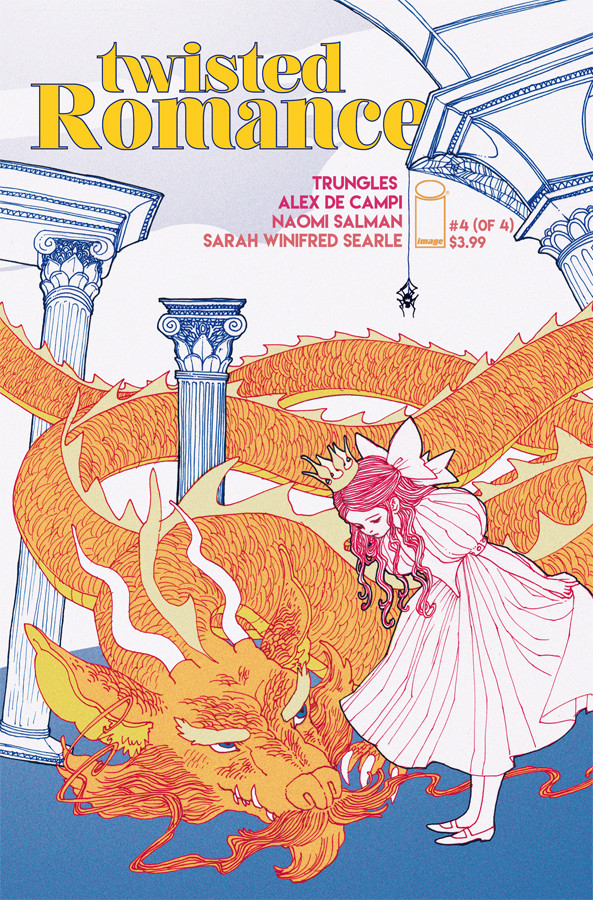
Maybe the most pervasive goal amongst the creators I spoke to was one shared by cartoonist Trungles (Twisted Romance, the upcoming The Magic Fish at Random House Graphic). His objectives aren’t the fame and fortune that comes with a successful adaptation of his work or becoming the biggest name in the medium. It’s much more modest than that.
“The goal is to just be able to tell your own story in a sustained way and in a way that sustains you as a person who has needs,” he told me. “It’s not really a matter of ‘oh, I want to draw this character in this studio or whatever.’ It’s more of ‘I want to have a sustained career.’
“I feel like a lot of the folks that I’ve talked to who are newer to the industry have goals that are oddly practical. A lot of conversations I have with people I know are like, ‘Yeah, physically my body can take this much if I do this many pages in a day and this is what my process is like and ergonomically this is what I’m doing to maximize my productivity and make sure I can work fast but also safely.’ And we’re talking about things like how we can take care of our health and our bodies.”
That level of communication amongst creators is certainly not new, but with the advent of social media and long-distance connections made thanks to the Internet, this kind of direct discussion and advisement amongst creators is easier than ever. Cartoonist Hannah Blumenreich (Full-Court Crush) told me that comics have long lacked a real mentor/mentee system, but as she noted, “I think that’s changing now.”
“It’s easier for newbies to access professionals—for better or for worse—or to access information. I think the current generation of creators is looking out for the up-and-comers,” Blumenreich said, specifically citing how this can help insulate current and aspiring creators from publishers and abusers who may try and take advantage of them. “It’s almost more important to define what success doesn’t look like instead of what it does.
“I think the safer and more stable comics becomes, the easier it will be to define and pursue success.”
Of course, there have been a couple key developments in the past decade or so that have helped creators escape those toxic relationships with publishers and others that may have chased them away from comics before. One of them is something Wright mentioned earlier, and that’s crowdfunding tools like Patreon and Kickstarter.
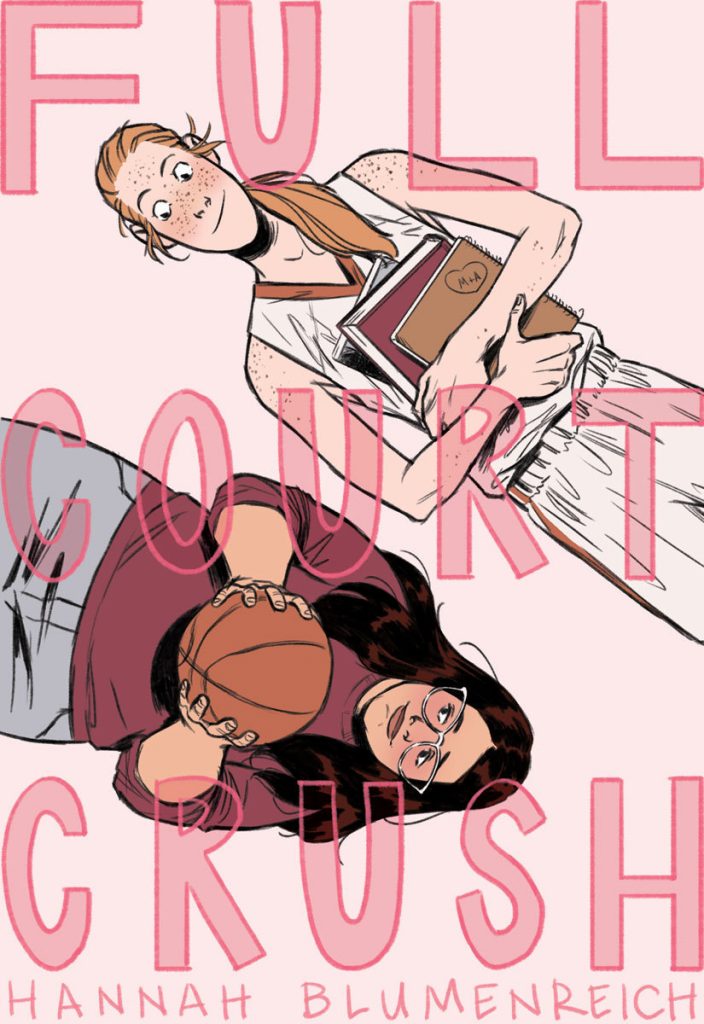
Crowdfunding and the varying platforms you can publish and monetize your comics on have changed the game for many creators, as it gives them agency in their own careers they may not have had before while changing what success could even look like for them. Take Blumenreich, for example. While she’s likely most famous for her Spider-Man fan comics – collected as Spidey-Zine – and how those led to her being hired for a story in a big issue of Amazing Spider-Man, Blumenreich turned that notoriety, her considerable talents and the platforms available to her into a project that gave her both freedom and financial success. As she noted on Twitter, her 12-page mini-comic Full-Court Crush earned her “more than double” what she was paid for two issues of for-hire work. She’s not the only one benefiting from these avenues of publishing.
“Look at the Beyond anthology. 4 Crowd-sourced comics made entirely by queers and people of color. People who’ve been shut out of the canon for so long, not just in comics but in, well, everything,” Blumenreich said. “Or Check, Please by Ngozi Ukazu. You know what American comics says doesn’t sell? Sports and gays. You know what Check, Please is about? Sports and gays.
“Crowdfunding is people showing up with dollars for what they want to see, for what publishers and editors have turned down for decades for being ‘too weird.’”
It’s things like this that make “comics the most diverse and malleable industry,” as Kangas shared. More than ever, comics can be anything and for anyone, and that’s thanks to the freedom crowdfunding, webcomics, an assortment of self-publishing options, and more offer. Sure, you can be Gabriel Picolo, the artist of Teen Titans: Raven for DC’s Ink imprint. But you could also be Gabriel Picolo, the cartoonist of Icarus and the Sun, a comic about a love story between, well, Icarus and the Sun that’s also the biggest success story in Indiegogo’s history of comic campaigns. 5 Either path is enviable, but having both options is a massive change from how things worked.
As Frantz told me, “I think the most important thing (crowdfunding and varying online platforms has) done is increase the variety of stories we have access to, and given marginalized voices more opportunities to be heard.
“Especially for crowdfunding and self-publishing – taking out the middleman gives more freedom for creators to tell exactly the kind of story they want to tell, without anyone editing it based on what they think will appeal to the masses.”
These platforms and others like them have helped erase any specific idea of what comics should be or who they should be for. That’s a powerful thing. But as Wright cautioned, they are not a surefire path to finding that sustainability Trungles noted above.
“The economics of making comics is always going to be on our minds, and while self-publishing and options like Kickstarter and Patreon can provide means to tell our stories, it doesn’t always—or often—mean we can also make a living at it,” Wright said. “For every Kickstarter that hits six figures there are countless others that don’t reach their more modest goals. And recent changes to how Patreon charges users in an attempt to satisfy investors has been a source of consternation among creators.
“Which is to say, even those spaces that would seem to assuage concerns are not guaranteed.”
But with any revolutionary opportunity, there will be plusses and minuses, pros and cons, and a whole lot of uncertainty. The other key development I alluded to earlier is rife with the same variable experience, although it may be far more extreme and costly to us as people than an ignored Patreon or an unfulfilled Kickstarter. I’m talking about social media, of course. While it’s a game changer for gaining a following and engaging with fans, it is not without its negatives. 6 The duality of that experience weighs on creators.
“Once you get past a certain level of exposure, you’re going to deal with some level of harassment no matter what – because if what you post gets exposed to enough people, eventually it’s going to be seen by someone who has a problem with it,” Frantz said.
“It’s a double edged sword. The Internet gives you access to everyone, but it also gives everyone access to you. Even if you’re not looking to start a fight, sometimes the fight finds you, and all you can do is choose whether or not you want to engage with it.”
Wright has made “invaluable connections and friendships in comics through social.” But he also believes “the negatives outweigh the positives.”
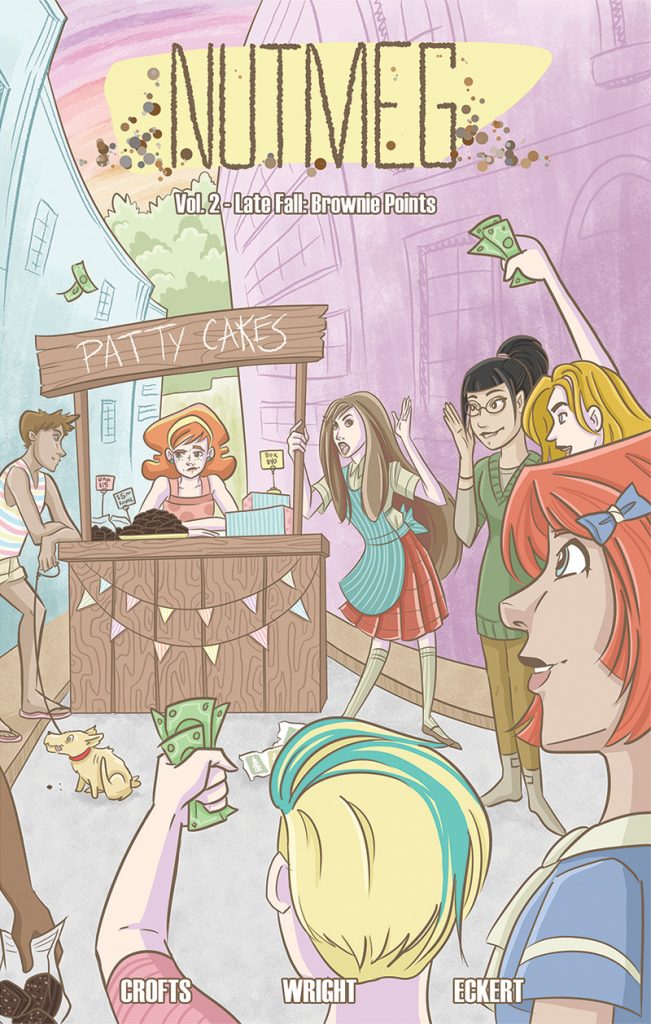
“As a guy making comics, on a bad day I only see a small fraction of what my fellow women, femme, and (non-binary) creators have (to) deal with on Twitter and elsewhere. They have to wade through that and attempt to reach a wider audience and try to find enough good out there to continue doing so. Taking proactive steps to curate one’s timeline, friends, and followers, reporting bad actors and trolls, can only go so far.”
And yet, it’s not something you can really move on from if you’re a comic creator looking to make your way in comics. Both Frantz and Wright noted its inescapable nature, with Frantz saying “stepping away from the Internet just isn’t an option for most creators” because of the value it brings to the table. That’s the tricky part. It truly does have tremendous utility for creators of all varieties. 7
“The amount of visibility and outreach that you gain through the internet is more than I ever could have accomplished before social, and honestly, I have a pretty modest following,” Goux said, before adding, “And that’s not even mentioning what you gain from even a single one-on-one interaction from someone you’ve never met who finds your book and messages you on social to tell you what it means to them.
“Which I guess for me is probably even more important.”
The validation of a job well done is of immense value, and personal rewards like that cannot be ignored. But its true capability lies within the former elements Goux spoke to. Social media can help you find a peer group, build a following, engage with your audience, find work, and all kinds of other wonderful things. It’s even changing what creators believe the potential of comics can be.
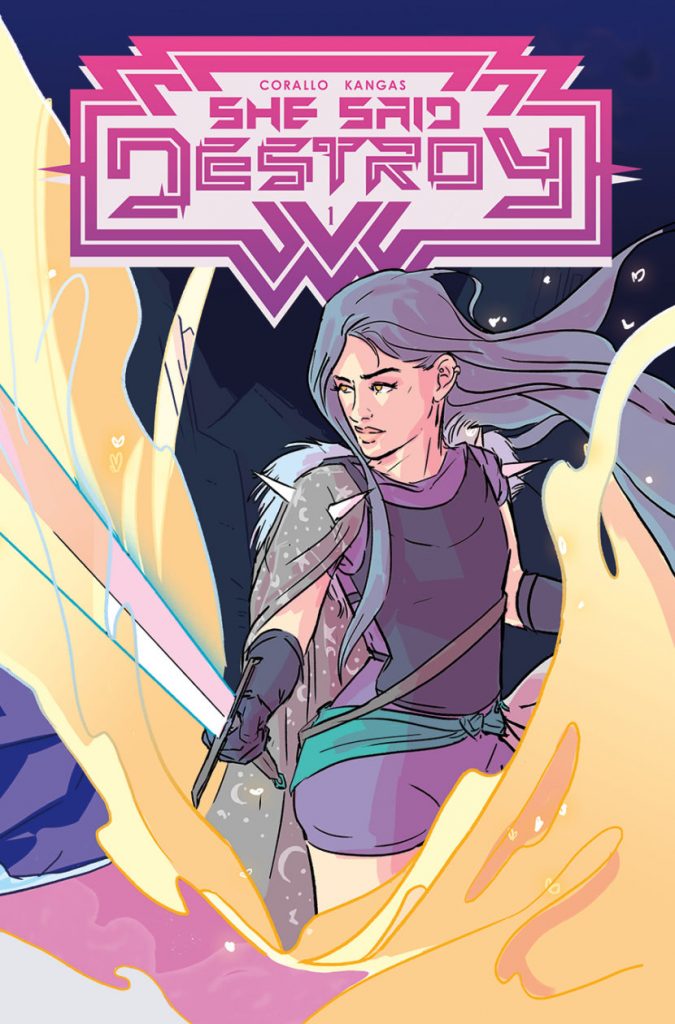
“Social media has changed a lot of what I expected working in comics would be like. I used to think that working for the Big Two made you successful, but if anything I now see there are a lot more ways to reach readers that allow your work to be easily shared,” Kangas said, before adding, “And your readers and building a community is what make you successful.”
For Blumenreich, social media meant finding success in comics at all.
“I wouldn’t have a career without my Twitter account,” she said. “Every job I’ve gotten has been because of work I’ve posted on Twitter, connections I’ve made there. The money I’ve made from creator-owned mini comics has been through self-promotion on Twitter.
“I rely on it completely.”
One thing that has aided her experience, she’s noticed, is the kind of work she makes.
“From what I’ve noticed, the social media experience also depends on the kind of work you make,” she told me. “A superhero audience, for instance, comes pre-packaged. There’s decades of material behind them, if you wander onto the scene, that audience isn’t coming to your house, you’re going to theirs.
“It makes for a totally different online experience. Focusing on original work has shown me a huge shift in the kind of audience I can attract and build for myself.”
The game is changing. That much is certain. But what does that mean for the original titans who were once considered the pinnacle of what you could do in comics? With the evolution of what creators can do to build a career, is there a place for Marvel and DC in the aspirations of creators these days?
The short answer is “of course.” Some of the creators I spoke to for this piece had interest in working for Marvel or DC, at some point, even if it was very situational and not a core focus for most of them. While they are certainly not without their faults, Marvel and DC can provide substantial opportunities for creators, and for some, those are a gateway to other gigs. For others, they could provide the career they’re looking for. While other publishers have risen up to match—or even surpass, depending on how you value the long tail—the impact Marvel and DC are having on comics today, there’s still immense value there for creators.
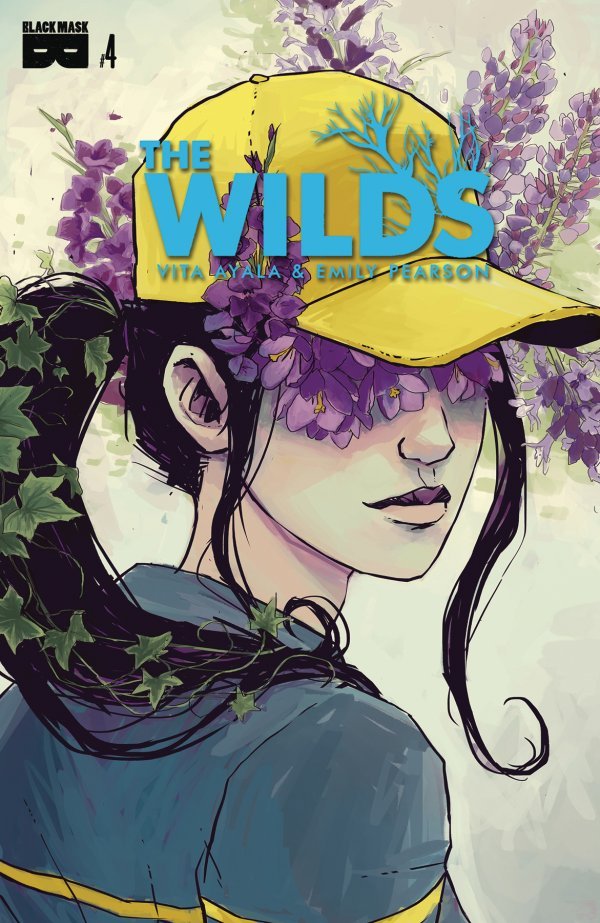
Look at Ayala. They are someone who found success writing for both Marvel and DC as well as other direct market publishers like Valiant, Black Mask, and Vault. These publishers have been a big part of what they envisioned comics to be since the beginning.
But that doesn’t mean Marvel and DC are everything.
“DC and Marvel comics are why I started reading comics. They are also a lot of people’s ‘in’ to the medium, both in terms of the books and the larger media franchise stuff. I think they are important to the industry, and more, I think they hold a lot of meaning for a large variety of people,” Ayala said.
“I have been blessed enough to be able to take advantage of opportunities to work at both companies, and I am forever grateful. If they want to keep hiring me to tell stories in their universe, I am honored to do it,” they added. “That being said, if they decided tomorrow that they no longer saw me as right for their companies, that would be okay too. I would go back to just being a reader of their worlds, and continue to make creator-owned work.”
Having opportunities outside of the Big Two – like the ones Ayala spoke to – allow creators to not be beholden to the ones Marvel or DC provide. Once upon a time, it’d be incredibly difficult to say no to either of them. Now, these other avenues enable creators to chart their own path if they decide to go that direction or if that’s the only opportunity provided to them.
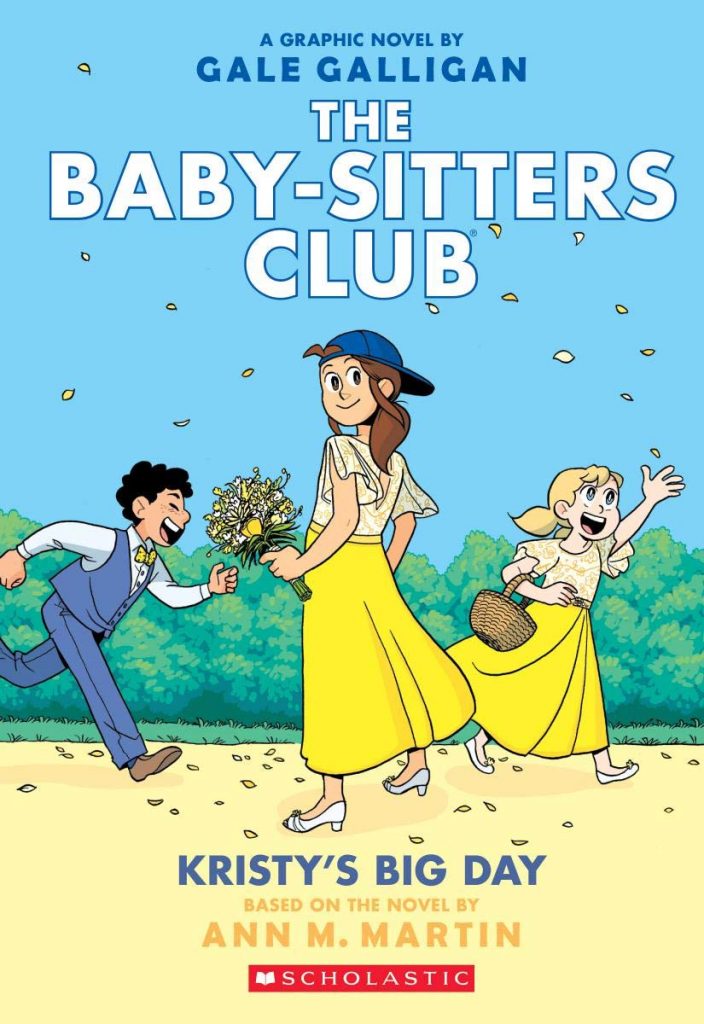
But still, for some in comics, the perception remains that Marvel and DC represent the health and potential of the industry. That reflects a point Galligan made. While “cape comics are absolutely a piece of my vision of comics,” as Galligan said to me, she doesn’t view them as the end all, be all, nor should she. And the premise that they are for many is a point of contention.
“It’s frustrating to me when people use cape comics and the direct market to define comics as a whole,” Galligan said. “And because they’re often viewed as representative of comics, it can be especially disappointing when they fall short.
“But there’s so much more out there. There always has been.”
Trungles, for one, believes there’s been a shift already away from superheroes being the core of the medium.
“I feel like one of my favorite things that has happened with comics being more accessible and more creators being able to tell their stories is that comic books have stopped being synonymous with superheroes as a genre,” he shared. “And what kind of happened outside of that too is there are comic book stories that are being told outside of superheroes within genres that are different as well, and so there is starting to be a shifting consciousness with comic books where we understand it as a medium as opposed to a genre.
“That really opens up the storytelling possibilities and I’m sure the marketing possibilities for a lot of new stories to be told in the medium.”
Possibilities.
This word that Trungles used is an important one, as we’re at an inflection point of sorts in comics, and one where the shape of what the medium could look like going forward could be defined for the next generation. The evolution of comics is happening, and it’s hard to say what they’ll look like when it’s all said and done. Each of the creators I talked to had ideas of where they’d like to see things go, and perhaps the future exists within one or all of their perspectives, as they’re the people who will help define where the medium goes from here.
Kangas spoke to a sentiment that others echoed, and that’s a continued push to diversify not just the creators telling stories at larger publishers, but the kinds of stories being told.
“There are a lot of people in the new generation of comics that can tell different, fresh and diverse stories with larger publishers,” Kangas said. “I hope that at some point (the publishers) use that as an advantage and spread their outreach to new readers.”
“I think we’re on the right track of finding new ways to deliver the stories,” she added, “I just hope we take advantage of social media and the Internet to find new ways to find creators.”
Frantz supports that perspective, saying, “I want there to be more comics, and I want there to be more comics introducing unique stories and new perspectives from those whose voices aren’t often heard.”
“I think I just want comics to continue growing and changing as fast as it has been. I’d love to see a day when comics and graphic novels are widely considered a medium and not a genre, not just within the comics industry but by the mainstream media as a whole,” Frantz added. “I’d love to see a day when there’s enough comics that they’re shelved among prose novels instead of being in their own section of the bookstore. I’d love to see them appear regularly on every bestseller list, and considered for every literary award.”
Ayala’s excited for the future already, as in general, they believe “we are headed for even more accessibility—both for readers and for creators—and that is so awesome!” But the word that sums up Ayala’s vision for the future of comics is this: more.
“I just want more of everything. More femme folks in comics, more enby folks, more PoC, more folks from the disabled community, more LGBTQ+ telling (their) own stories,” Ayala said. “Comics is a medium that is special for many reasons, but to me one that is really central is accessibility. If you are able to engage visually, then you can engage with comics. You don’t even actually have to be able to read—which I wasn’t for a long time even though I collected and interacted with comics—to get something out of comics.
The last point Ayala made was important to Trungles as well. As someone who immigrated to the United States when he was young, comics were his “gateway to literacy,” and he believes comics are an excellent tool in helping people learn, both in their youth and beyond.
“I want to see comic books sitting comfortably alongside your textbooks in terms of literature and in terms of the way people think of them as books,” he said.
Wright wants to see “increasing engagement with younger readers, since that’s literally where the future of comics lies,” and as part of that, he’d like to see the expansion of where you find and buy comics. Finding new ways to deliver these increasingly diverse stories to different readers is at the top of his wish list.
“You shouldn’t have to only go to a specialty shop to come into contact with comics,” Wright said. “You should be able to see them everywhere.”
Galligan sees the increased engagement with young readers happening first hand, as The Baby-sitters Club series she works on is a monster hit. 8 Not only that, but Galligan has seen more and more publishers embracing the age group, including Marvel and DC themselves, with larger publishing houses joining the fray as well (like Gina Gagliano’s Random House Graphic). That’s important, and something that will lead to other needs.
“I think that as we confirm unassailably that, yes, kids love comics, we’ll also find that the kids who read comics are growing into young adults and grownups who also would like to read comics, creating more space for all kinds of graphic novels in the market, in every genre,” Galligan said. “I want to believe that comics will just exist for more Americans, not only as a stepping stone to other books or as a niche hobby.”
It wasn’t just the medium itself the creators I spoke to envisioned a better future for. Both Galligan and Blumenreich had hopes related specifically to the people actually making comics, as well. Blumenreich’s vision was encompassed by one simple word: “Union,” an idea that has been gaining steam on social media as of late. 9 Galligan views collaboration and communication between creators as essential to improving their short and long-term outlooks, as well, but was less specific about the overall mechanism in getting there.
“I hope that we can continue working together and finding ways to make the path easier for each other. I want to see more resources for upcoming creators, more open information about publishers and page rates, more mentorships, more safety nets,” Galligan said. “I want us to feel like maybe we could retire someday, you know?”
Goux agrees with many of the ideas the others shared with me, but in her mind, “it’s the generation that’s after me that’s going to really determine (where comics go).”
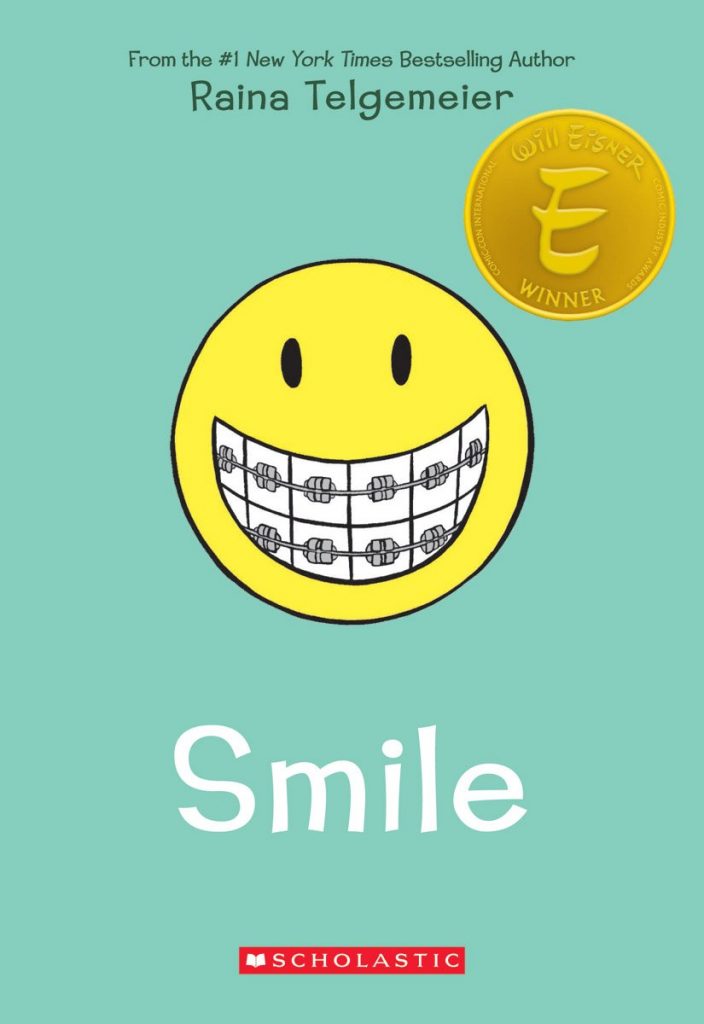
Raina Telgemeier’s Smile 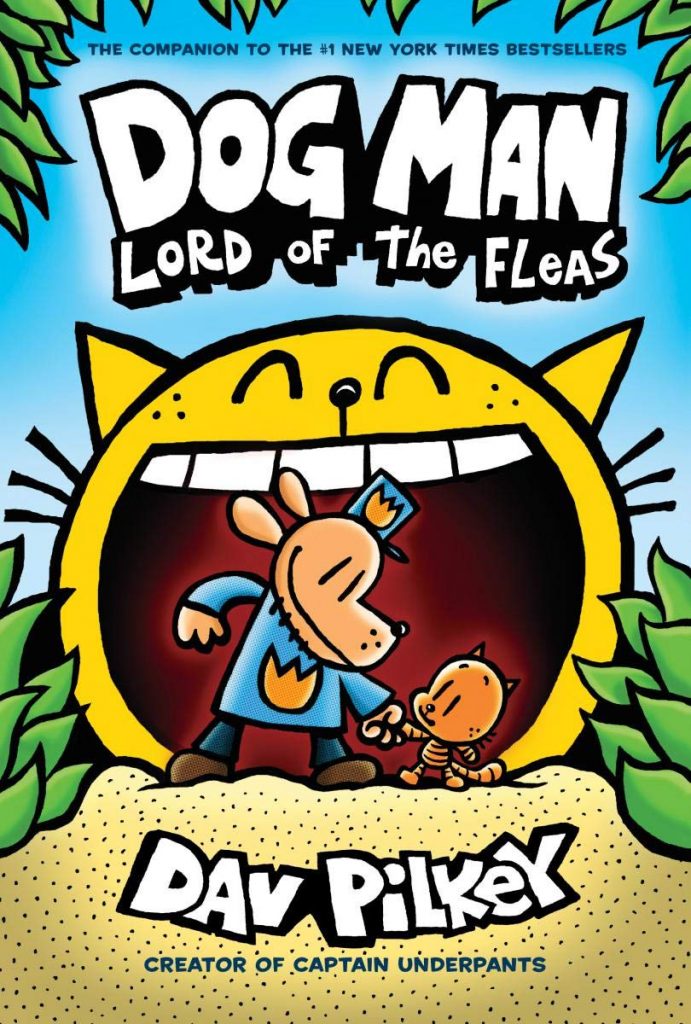
Dav Pilkey’s Dog Man: Lord of the Fleas
It’s an interesting idea, and one I also saw emphasized by retailer Brian Hibbs in his recent write-up for The Beat about 2018’s dynamite Bookscan numbers, much of which was driven by the comics you wouldn’t see on major comic sites, but ones by creators like Raina Telgemeier (Smile) and Dav Pilkey (Dog Man).
“The market for who is buying comics is changing, and it is changing for the wider and the better. The eight year old who is inhaling Dav Pilkey in 2018 is going to be the comics-literate adult of 2030,” Hibbs wrote. “Which is going to change what comics readers in the ‘30s will want or expect from comics. 10
“The kids reading comics in 1965 totally imagined what the 1980’s comics scene could and would be, which is why we’re where we are today, but the shape of the Western industry in the future is absolutely what today’s children read and see.”
Comics are evolving before our very eyes, and they will continue to do so going forward. And as comics change, the experience of being a comic creator – how you become one, how you find success, what that even means, and everything else – will continue to transform as well. But if what’s next is defined by what today’s children read and see, as Hibbs suggested, then I’m bullish on the future of comics, thanks to the work the smart, talented creators I spoke to are putting together.
Thanks to Ayala, Blumenreich, Frantz, Galligan, Goux, Kangas, Trungles and Wright for the perspectives for this piece. If you enjoyed this feature, maybe consider subscribing to SKTCHD, as its run of free content is ending this week.
The side of the comics industry that’s encompassed by bookstores, mass merchants, online retailers and Scholastic book fairs.↩
Comic shops.↩
When used like this, graphic novel is an umbrella term that also represents trade paperbacks and other collections of comics.↩
This was an anthology of queer sci-fi and fantasy comics that was edited by Sfé R. Monster, assistant edited by Taneka Stotts and funded to the tune of $79,670 on Kickstarter.↩
It raised a staggering $596,401 during its campaign.↩
As you likely know!↩
Including this one: since I started SKTCHD in June of 2015 (originally, of course), just under 38% of its traffic came from social, making it the site’s largest source of traffic.↩
Per Brian Hibbs’ Bookscan report for The Beat, Galligan was the seventh best selling creator in the book market with 220,218 books sold in 2018.↩
Especially in the wake of layoffs related to the Lion Forge/Oni merger and colorist Justin Ponsor passing away after a battle with cancer.↩
Note: Emphasis by Hibbs.↩
